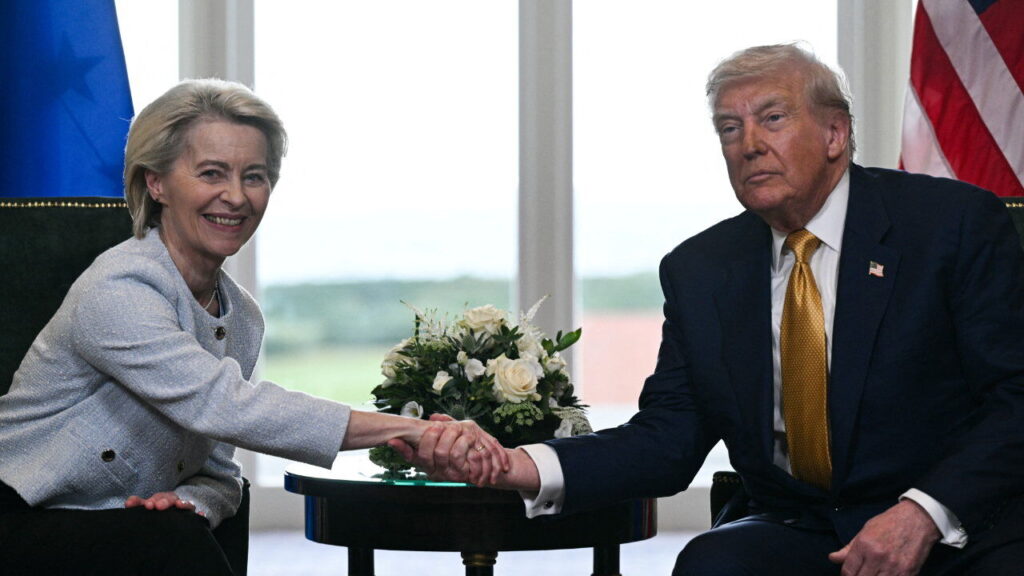Since President Donald Trump introduced his Liberation Day tariffs in April, the relationship between the United States and the European Union has faced considerable strain. The tariffs, aimed at addressing trade imbalances, sent significant shockwaves through one of the world’s largest trading relationships, stirring controversy and discontent on both sides of the Atlantic. The European Union initially attempted a diplomatic approach, seeking to engage the Trump administration in constructive negotiations. However, as the months rolled on, what began as a cordial attempt at dialogue quickly devolved into a back-and-forth exchange marked by threats of retaliation from the EU. The situation was tense, with both parties taking firm stances on various trade issues, leading many analysts to predict further escalation in hostilities.
In a surprising turn of events, on July 27th, the potential for reconciliation emerged with a significant breakthrough in negotiations. At Trump’s golf course in Scotland, both President Trump and Ursula von der Leyen, the President of the European Commission, came together to present the framework of an initial trade agreement. The event marked a notable pivot in the ongoing saga, indicating a willingness from both parties to return to the bargaining table. This dialogue was crucial as it laid the foundation for future cooperation amidst the backdrop of escalating tariffs and countermeasures that had characterized early discussions. The optics of the meeting signaled a temporary alleviation of tensions between the U.S. and the EU, highlighting the complexities of international trade diplomacy in a polarized environment.
The EU’s strategy throughout these tumultuous negotiations required a delicate balancing act. On one hand, European officials needed to make sufficient concessions to appease President Trump and his demands, which often stemmed from anxiety over trade deficits and industrial protectionism. The other side of this balancing act involved protecting the economic interests of EU member states and minimizing the potential damage imposed by retaliatory measures. By offering strategic compromises, the EU aimed to mitigate the impact of Trump’s aggressive tariff policies while simultaneously restoring some semblance of order to trade relations that had been disrupted.
This preliminary agreement signals the potential for a more stable trade environment, but it also underscores the fragility of the situation. Both the U.S. and EU economies are deeply intertwined, with significant dependencies across various sectors, including technology, agriculture, and manufacturing. The stakes are high for both regions, as escalating trade tensions could potentially lead to broader economic ramifications that would extend beyond their borders. In addition, the complexity of global trade agreements means that even with a framework in place, continuous dialogue will be essential to keep the momentum moving in a positive direction.
As the world watches closely, it is clear that the path ahead will not be without its challenges. The upcoming negotiations will require both sides to remain committed to addressing outstanding issues that may provoke future disputes. These may include tackling subsidies, aligning regulatory standards, and ensuring that both parties reap equitable benefits from any agreement.
Ultimately, the meeting in Scotland marks a crucial juncture in U.S.-EU relations. While the initial agreement is a hopeful sign for international trade, it is merely the first step towards a comprehensive resolution. The success of these negotiations will hinge upon the persistence and willingness of both the U.S. and EU to engage in constructive dialogue moving forward and to navigate the complex landscape of modern trade with skill and diplomacy. As future discussions unfold, the global economy will be watching intently, awaiting the next chapter in what has become one of the most watched economic narratives of recent times.









